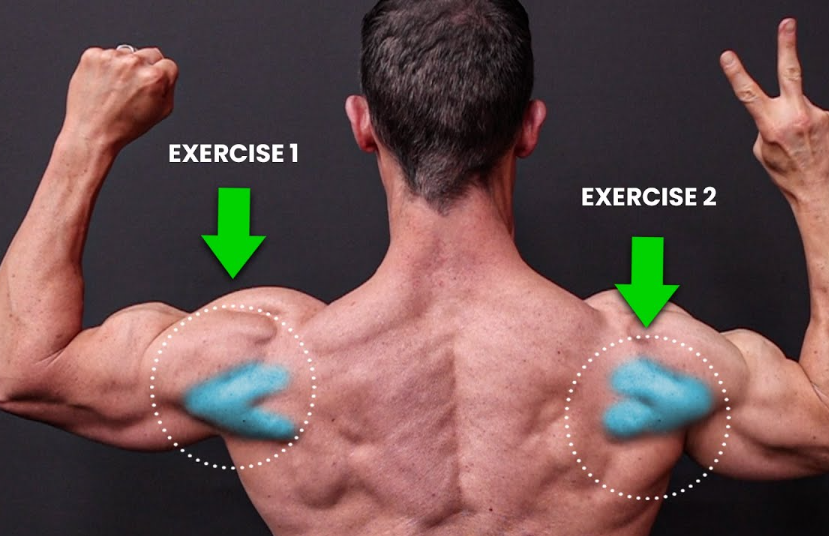BOURSESSENEGAL – When it comes to building well-rounded shoulders, incorporating the best rear delt exercises into your routine is crucial. Many people focus on the front and side deltoids, often neglecting the rear deltoids. This oversight can lead to muscle imbalances and increase the risk of injury. In this guide, we’ll explore effective rear delt exercises, their benefits, and how to incorporate them into your fitness routine.
Why Focus on Rear Delts?
Understanding the Role of Rear Deltoids
The rear deltoids, or posterior deltoids, play a significant role in shoulder stability and overall upper body strength. These muscles help with pulling movements and enhance your posture. Neglecting them can lead to a rounded shoulder appearance, which may cause discomfort and even pain in daily activities.
Benefits of Strengthening Your Rear Deltoids
Strengthening the rear delts offers multiple benefits:
- Improved Posture: Strong rear delts help counteract the effects of sitting for long periods.
- Enhanced Performance: Better shoulder strength can improve your performance in various sports and activities.
- Reduced Injury Risk: Strengthening these muscles helps protect your shoulders from injuries during workouts.
Top Rear Delt Exercises to Incorporate
1. Bent-Over Dumbbell Fly
The bent-over dumbbell fly effectively targets the rear delts and is easy to perform.
How to Perform:
- Stand with feet shoulder-width apart, holding a dumbbell in each hand.
- Bend your knees slightly and hinge at the hips, keeping your back straight.
- Let the dumbbells hang down toward the floor, palms facing each other.
- Raise the weights out to the side until your arms are parallel to the ground.
- Squeeze your shoulder blades together at the top, then lower the weights back to the starting position.
2. Face Pulls
Face pulls are fantastic for targeting the rear delts and improving shoulder stability.
How to Perform:
- Attach a resistance band or cable at face level.
- Stand with your feet shoulder-width apart and grab the band/cable with both hands, palms facing each other.
- Step back to create tension in the band.
- Pull the band towards your face, keeping your elbows high.
- Squeeze your shoulder blades together and hold for a moment before returning to the start.
3. Reverse Pec Deck Machine
Using the reverse pec deck machine effectively isolates the rear deltoids.
How to Perform:
- Adjust the seat height so the handles are at shoulder level.
- Sit down and grab the handles with palms facing down.
- Push the handles back, keeping your elbows slightly bent.
- Squeeze your shoulder blades together at the peak of the movement, then slowly return to the starting position.
4. Seated Dumbbell Rear Delt Raise
This exercise allows you to focus on form while minimizing momentum.
How to Perform:
- Sit on a bench with a dumbbell in each hand, resting your elbows on your knees.
- Keep your back straight and let the dumbbells hang down.
- Raise the weights out to the side, focusing on the rear delts.
- Slowly lower the weights back to the starting position.
5. T-Bar Row
While primarily a back exercise, the T-bar row also engages the rear delts effectively.
How to Perform:
- Stand over a T-bar row machine with feet shoulder-width apart.
- Bend at the hips, keeping your back straight, and grasp the handles.
- Pull the bar towards your chest, squeezing your shoulder blades together.
- Lower the weight back down with control.
How to Structure Your Rear Delt Workout
Creating a Balanced Routine
Incorporate rear delt exercises into your shoulder or upper body routine 1-2 times a week. Aim for 3-4 sets of each exercise, with 8-12 repetitions.
Example Rear Delt Workout
Warm-up: 5-10 minutes of dynamic stretching focusing on shoulders and upper back.
- Bent-Over Dumbbell Fly: 4 sets of 10-12 reps
- Face Pulls: 3 sets of 12-15 reps
- Reverse Pec Deck Machine: 3 sets of 10-12 reps
- Seated Dumbbell Rear Delt Raise: 4 sets of 10-12 reps
- T-Bar Row: 3 sets of 8-10 reps
Tips for Maximum Effectiveness
- Focus on Form: Prioritize proper technique over lifting heavy weights. This approach ensures you’re targeting the right muscles and minimizes injury risk.
- Mind-Muscle Connection: Concentrate on your rear delts during each exercise. This focus enhances the effectiveness of your workout.
- Include Variety: Switch up your routine every few weeks to challenge your muscles and keep your workouts engaging.
Common Mistakes to Avoid
Neglecting Rear Delts in Your Routine
Many lifters overlook rear delts, focusing instead on front and side exercises. Make it a priority to include rear delt movements in your routine.
Using Too Much Weight
Lifting heavy can lead to poor form. Start with a weight that allows you to maintain control and focus on your muscle engagement.
Rushing Through Reps
Take your time with each rep. A slower tempo helps increase tension on the muscles, leading to better results.
Conclusion: Embrace the Best Rear Delt Exercises
Incorporating the best rear delt exercises into your workout routine can dramatically improve your shoulder strength and appearance. By focusing on these movements, you enhance your posture, reduce injury risks, and build a more balanced physique.
Start today by adding some of these exercises to your next workout. With dedication and consistency, you’ll soon notice the benefits in your overall strength and performance. Remember, strong rear delts contribute significantly to a well-rounded and powerful upper body. Don’t overlook them
REFERENCE : https://www.health.com/



